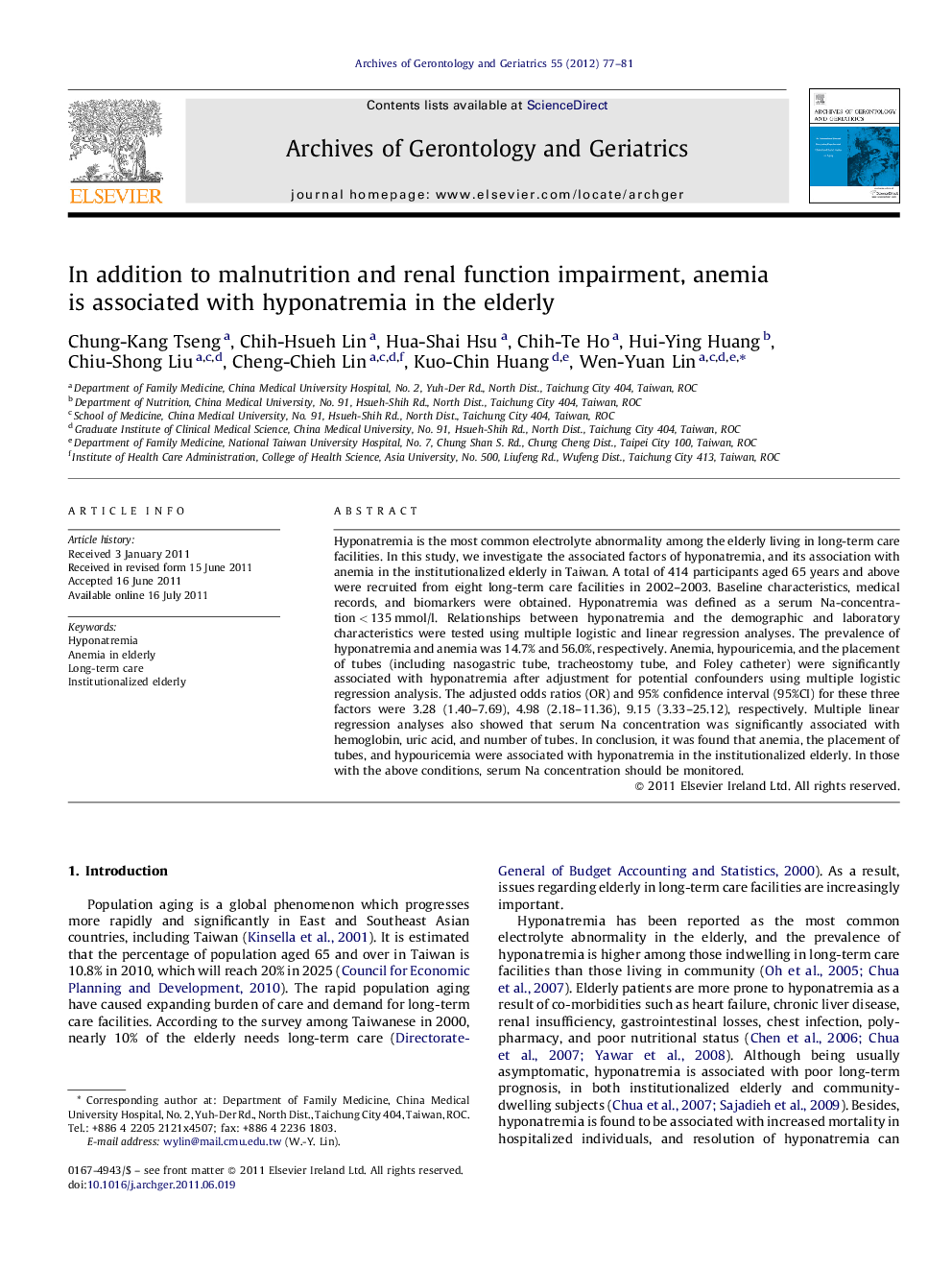| Article ID | Journal | Published Year | Pages | File Type |
|---|---|---|---|---|
| 1902861 | Archives of Gerontology and Geriatrics | 2012 | 5 Pages |
Abstract
Hyponatremia is the most common electrolyte abnormality among the elderly living in long-term care facilities. In this study, we investigate the associated factors of hyponatremia, and its association with anemia in the institutionalized elderly in Taiwan. A total of 414 participants aged 65 years and above were recruited from eight long-term care facilities in 2002-2003. Baseline characteristics, medical records, and biomarkers were obtained. Hyponatremia was defined as a serum Na-concentration < 135 mmol/l. Relationships between hyponatremia and the demographic and laboratory characteristics were tested using multiple logistic and linear regression analyses. The prevalence of hyponatremia and anemia was 14.7% and 56.0%, respectively. Anemia, hypouricemia, and the placement of tubes (including nasogastric tube, tracheostomy tube, and Foley catheter) were significantly associated with hyponatremia after adjustment for potential confounders using multiple logistic regression analysis. The adjusted odds ratios (OR) and 95% confidence interval (95%CI) for these three factors were 3.28 (1.40-7.69), 4.98 (2.18-11.36), 9.15 (3.33-25.12), respectively. Multiple linear regression analyses also showed that serum Na concentration was significantly associated with hemoglobin, uric acid, and number of tubes. In conclusion, it was found that anemia, the placement of tubes, and hypouricemia were associated with hyponatremia in the institutionalized elderly. In those with the above conditions, serum Na concentration should be monitored.
Related Topics
Life Sciences
Biochemistry, Genetics and Molecular Biology
Ageing
Authors
Chung-Kang Tseng, Chih-Hsueh Lin, Hua-Shai Hsu, Chih-Te Ho, Hui-Ying Huang, Chiu-Shong Liu, Cheng-Chieh Lin, Kuo-Chin Huang, Wen-Yuan Lin,
